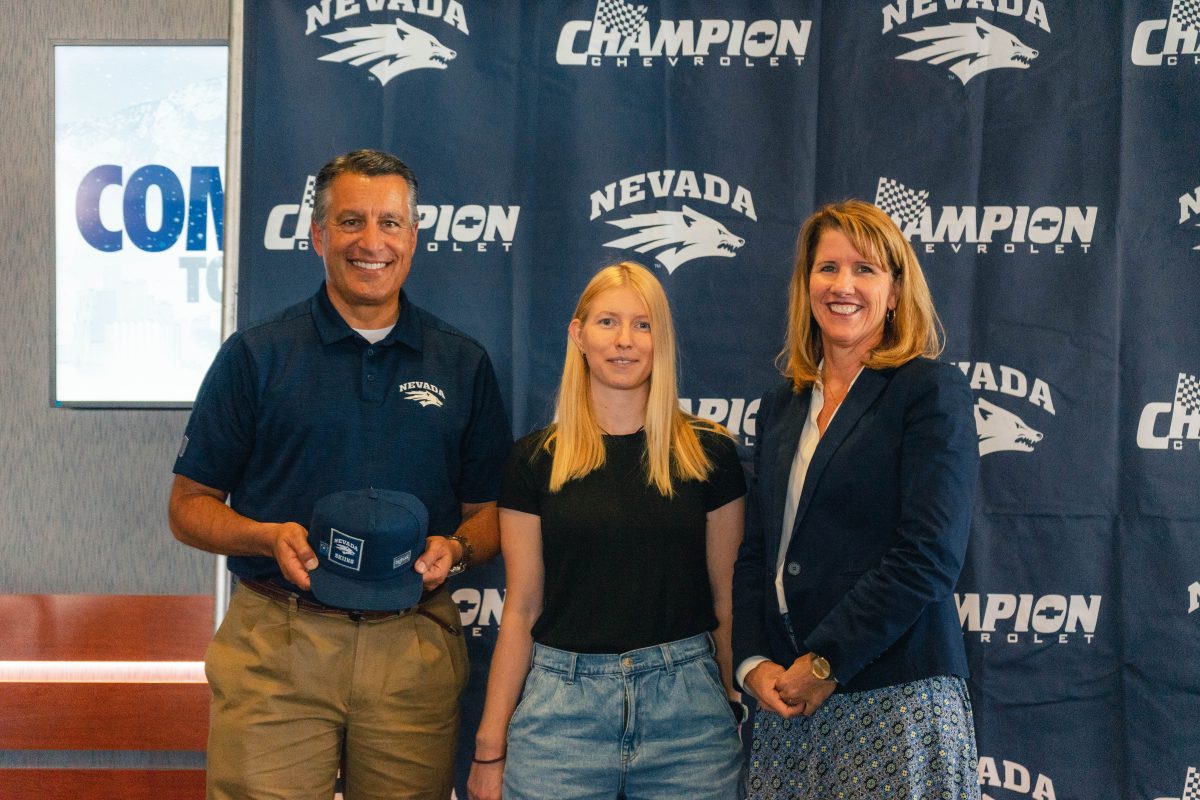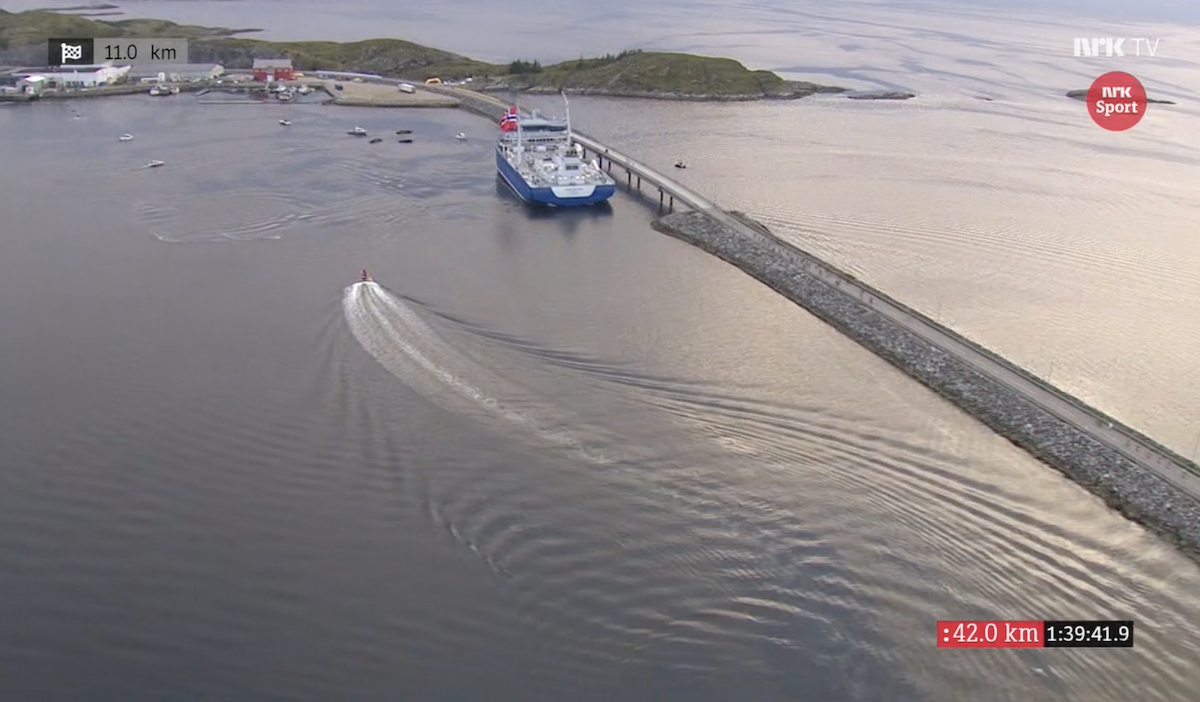
When Canadian Head Coach Justin Wadsworth first got his hands on a start list for Wednesday’s World Championships team sprint, he liked what he saw.
His athletes Devon Kershaw and Alex Harvey were going up against some of the biggest names in the sport: Sweden’s Emil Joensson, Russia’s Alexander Panzhinskiy and Nikita Kriukov, and Norway’s Ola Vigen Hattestad and Petter Northug.
But when he took a look at the running order, Wadsworth thought he saw a chink in the armor of the odds-on favorites: favorites Norway had chosen Hattestad as their anchor, not Northug, one of the best finishers in the history of the sport.
“I saw that, and I thought, ‘this is good,’” Wadsworth said. “I thought, ‘okay—maybe this is a bit of a chance here.’”
The race ended up coming down to a last-leg battle between Harvey and Hattestad on the homestretch, with the Canadians ultimately coming out ahead to capture the first World Championships gold in the nation’s history.
For Wadsworth and his athletes, the result set off a frenetic celebration in Oslo. The Norwegians, meanwhile, had to deal with a host of second-guessing journalists, and a skeptical public, who wanted to know why Northug hadn’t been given the opportunity to close out the race.
“Eighty percent of our readers would rather have you on the last leg,” one reporter told Northug in the post-race press conference. “What do you think about that?”
On paper, the Norwegian team’s decision certainly looked strange. But it was actually quite rational, as Hattestad possesses one of the best double-poles in the sport, and also has beaten Northug in the homestretch of a classic sprint on at least one occasion, in Trondheim two years ago.
“Ola is extremely strong in the sprint, always,” Age Skinstad, the Norwegian national team manager, told FasterSkier. “Classical double poling is his specialty. So there was no big doubt about that.”
Norway had actually engaged in a bit of deception, telling assembled journalists at a pre-race press conference that Northug would be the anchor. But no one seemed to notice—the Norwegian team staff hypothesized that the Swedes were paying too much to their poor results.
To be fair, in the fateful last leg of the final, Hattestad had his work cut out for him. After Finland’s Sami Jauhojaervi dropped Northug and the rest of the pack on the penultimate lap, Hattestad got the tag with just 1.6 kilometers to close the gap to Ville Nousiainen, Finland’s anchor.
“My only thought was to catch the Finn,” Hattestad said in the press conference afterwards.
With Norway leading the charge, all Harvey had to do was follow, stepping out on the climbs to ski his own rhythm.
“I knew Hattestad would be going really fast out of the stadium,” Harvey said. “I was better just following.”
Nousiainen came back as the group headed down the backstretch, and Hattestad led over the top of the last flat, down into the finishing straight, for what seemed like another inevitable Norwegian victory. But Harvey had other plans, even though he, unlike his coach, still thought that Hattestad was the Norwegians’ best choice for an anchor.
“For sure, Northug, at the end of a distance race,” Harvey said. “But high-speed like that, usually Hattestad is better—I thought it was a good choice for them.”
Still, Harvey said, “my finishing gear is really good these days.” He drafted Hattestad down the short hill into the 150-meter-long homestretch, then stepped out into an adjacent lane. Harvey drew alongside, Hattestad responded, and it looked like the Norwegian might be able to hold on for the win. But then, Hattestad said, he missed a stroke.
“Twenty meters before the finish line, I had one miss, and then he was suddenly inside of me, and I realized it would be tough to beat him,” he said. “I gave everything I had, and today, the Canadian was the best.”
The finish wasn’t all that close—while Hattestad lunged a little early, Harvey had already come past him, gliding through the finish line and into Kershaw’s arms.
The result certainly left plenty of people wondering about Norway’s decision. But in the press conference—with Hattestad sitting right next to him—Northug was still diplomatic.
“Everyone knows that Ola is one of the strongest double polers in the world, especially the last 200 meters,” Northug said. “I think the tactic is to have the best skiers on the last leg, and the best finisher, and that is Ola.”
Nathaniel Herz
Nat Herz is an Alaska-based journalist who moonlights for FasterSkier as an occasional reporter and podcast host. He was FasterSkier's full-time reporter in 2010 and 2011.




5 comments
Lars
March 3, 2011 at 8:43 am
Hattestad was clearly the better choice for the last leg. Just look at his last leg in the team sprint back in the Librec WC.
I actually think Northug lost the sprint fro Norway by making a couple of tactical blunders on his last leg.
He stayed behind Modin on the hill behind “Gratishaugen” and as he often do Modin blew up so Finland and Canada was able to get a substantial lead.
Northug then got past Modin and took up the chase and was able to catch up to Canada but Finland still had a large lead. Here Northug arguably made the second tactical mistake , He went in front of Kershaw to continue hunting Finland down.
Meaning that after the change Hattestad was second and had to expend a lot of energy chasing Finland down wile Harvey could stay behind him getting a easyer journey.
If Northug had stayed behind Kershaw the situation might have been reversed and Hattestad might have been the one who could save his energy for the last run to the finish.
But then in that situation is also possible that Harvey would not have been able and/or interested in taking the lead and chase down the Fin. Meaning the 2 would end up sprinting for the silver and not the gold it`s impossible to say.
But no matter the big mistake was staying behind Sweden and letting Finland get away to hold that big lead to start the last leg.
Martin Hall
March 3, 2011 at 9:47 am
Kind of cool seeing the “squareheads” second guessing themselves, but I liked the line-up from the start. I thought the Norwegians had put Northug first so he could poach on the all of the other first leg skiers, who are traditionally the weaker skiers of the team, as the teams usually have their best skier ski the last leg. I figured Northug would be trying to blow up the other top teams first skier—he didn’t do his job. Also, this duo of Kershaw and Harvey have all the assets–ski both techniques well, sprint and ski distance well—they can be medal winners in the team sprint for a long time. On this day though Kershaw was the key, as I feel he put the pressure on Northug, rather then the other way around—these guys were flying on their legs if you check out the lap times they were doing.
Essentially Northug was doing his job, but the first leg skiers weren’t dropping, so Northug couldn’t give Hattestad the lead they thought he would. Kershaw was his equal on this day.
The Canadians won the race–it was not the Norwegians losing it.
Hattestad wasn’t the equal of Harvey tactically or in physicality—Harvey was so sure he had it, he didn’t even split at the end.
Look at World in this event—Canada will be a factor in the podium outcome—either technique—especially now that they know they can do it!
nexer
March 3, 2011 at 9:59 am
By definition the winning team always has the best strategy. None of the other teams had the “correct” strategy.
davord
March 3, 2011 at 11:34 am
“If” there had been a few more meters, Hattestad would have lost the silver medal, and who knows, even gone home without a medal, because Kriukov and Tscharnke were coming like freight trains behind him, and Nousiainen, with all his tactical troubles in the final portion of his last leg, was still sticking in there with a possibility of a medal. I think ‘if’ isn’t the best excuse for the Norwegians this time, because they could have easily gone home empty handed. For me, Harvey, Jauhojaervi and Panzhinskiy were the strongest in that race, by far.
Lars
March 3, 2011 at 12:28 pm
The public/media might be second guessing but it seems like the team is confident that the race order was the correct one.
There is noway Northug was going to hand off to Hattestad with a led so i doubt that was there strategy. Northug is`nt the type of skier who pulls away from the pack he usually relays on his sprint ability and the mens team sprint is usually hotly contested and as far as i can i remember usually comes down to several teams charging the finishline. Northugs job was to hand off to Hattestad in a good poison he didn`t mostly due to the fact that he stayed behind the Swede a clear tactical error.
But what ifs hardly matter Canada outperformed evryother team out there yesterday and won. My previous post was merely a attempt at showing that it`s unfair to blame Hattestad for the result when Northug was the one who preformed poorly.
I mean if we are going to go with what ifs what if Sweden had used Richardson instead of Modin. Richardson has far better capacity and would probably not have blown up like Modin did on his last leg. Or what if they used Hellner the guy who won the sprint gold and who clearly looking has his distance results have no problems with his capacity. In every race there are tactical and technical mistakes its all part of racing.
In a closely contested race like the team sprint i think all the top teams could think back with some if that had gone differently they could have won.
I mean looking back only on this world champs what if Randall hadn`t fallen in the sprints and what if Harveys leg did`nt cramp up in the 30k ?
Personally i think Randall would have won the sprint and that Harvey would not have been able to hold of the pack. Impossible to know but still fun to speculate.